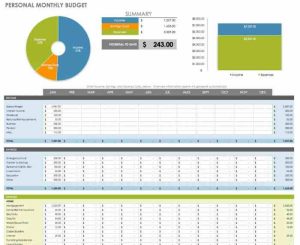Ever wondered what happens behind the scenes when a company undergoes a financial audit? It’s more than just number crunching; it’s a rigorous process designed to ensure the accuracy and reliability of a company’s financial statements. From meticulous planning and meticulous examination of financial records to the analysis of key financial statements and the eventual presentation of findings, a financial audit is a complex undertaking with significant implications for the audited entity.
This exploration delves into the intricacies of this crucial process.
Financial audits are vital for maintaining transparency and accountability within organizations. They provide stakeholders – including investors, creditors, and regulators – with assurance that the financial information presented accurately reflects the company’s financial health. The process involves a systematic review of accounting records, internal controls, and financial statements, aiming to identify any potential misstatements or irregularities. Understanding the stages involved is crucial for anyone involved in or affected by financial reporting.
Key Stages in a Financial Audit
A financial audit systematically examines a company’s financial records to ensure accuracy, compliance, and reliability. This process involves several key stages, each contributing to the overall assessment of the organization’s financial health. These stages are interconnected and require a thorough and methodical approach from the audit team.
Audit Procedures for Testing Internal Controls
Testing internal controls is a crucial stage. Effective internal controls mitigate risks of material misstatement in the financial statements. Auditors assess the design and operating effectiveness of these controls through various procedures. This involves reviewing control documentation, observing control activities, and performing tests of controls. For example, an auditor might review the authorization process for large purchases to assess the effectiveness of the controls designed to prevent unauthorized expenditures.
They might also observe the physical inventory count process to determine whether appropriate procedures are followed to ensure the accuracy of inventory records. The results of these tests influence the extent of substantive procedures performed later in the audit.
Gathering Audit Evidence
Gathering sufficient and appropriate audit evidence is fundamental to forming an audit opinion. This evidence is used to support the auditor’s conclusions about the fairness of the financial statements. The process involves multiple methods, each contributing to a comprehensive understanding of the client’s financial position.Documentation review forms a significant part of evidence gathering. Auditors examine accounting records, contracts, minutes of meetings, and other relevant documents to verify transactions and balances.
Interviews with management and staff provide insights into the company’s operations and internal controls. Testing involves performing procedures such as analytical procedures, confirmations, and recalculations to verify the accuracy of financial information. For example, an auditor might compare revenue growth trends with industry benchmarks to identify any unusual fluctuations requiring further investigation.
Common Audit Techniques for Verifying Financial Information
Various techniques are employed to verify the financial information presented by the company. These techniques help the auditors to obtain sufficient appropriate audit evidence.
| Technique | Purpose | Limitations | Example |
|---|---|---|---|
| Analytical Procedures | Identify unusual trends or fluctuations in financial data that may indicate errors or fraud. | Reliance on historical data and management’s explanations; may not detect all errors. | Comparing current year’s revenue growth to previous years and industry averages. |
| Confirmation | Verify balances with third parties (e.g., banks, customers). | Response rates may be low; confirmations may not always be reliable. | Sending a letter to a bank to confirm the company’s cash balance. |
| Recalculation | Verify the accuracy of mathematical computations. | Time-consuming, particularly for large datasets; only detects mathematical errors. | Independently calculating depreciation expense based on the company’s asset register. |
| Inspection | Examine documents and records. | May not detect all errors or fraud, particularly if documentation is manipulated. | Reviewing purchase invoices to verify that goods or services were received. |
In conclusion, a financial audit is a multifaceted process demanding precision, expertise, and a thorough understanding of accounting principles and auditing standards. From initial planning and the careful gathering of evidence to the detailed analysis of financial statements and the final report, each stage plays a crucial role in ensuring the reliability of financial information. The audit’s outcome provides invaluable insights into a company’s financial health, contributing to better decision-making and fostering greater trust among stakeholders.
The increasing role of technology further enhances the efficiency and effectiveness of modern audits, paving the way for more robust and insightful assessments.
FAQ Insights
What are the potential consequences of a negative audit finding?
Negative findings can lead to reputational damage, difficulty securing loans, regulatory penalties, and even legal action.
How long does a financial audit typically take?
The duration varies depending on the size and complexity of the organization, but it can range from several weeks to several months.
Who conducts financial audits?
Both internal audit teams (within the organization) and external audit firms (independent) conduct audits.
What is the difference between an internal and external audit?
Internal audits are conducted by an organization’s own staff, while external audits are performed by independent accounting firms to provide an objective opinion.





